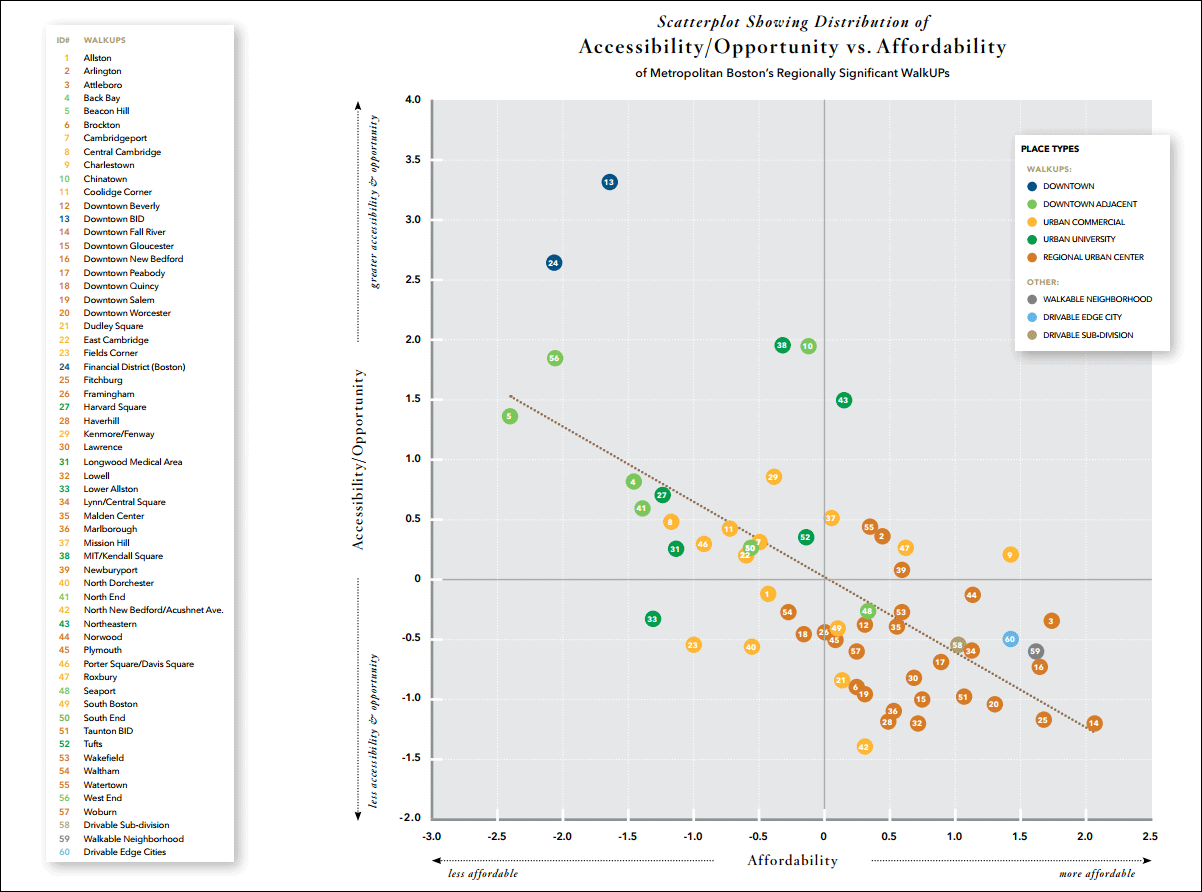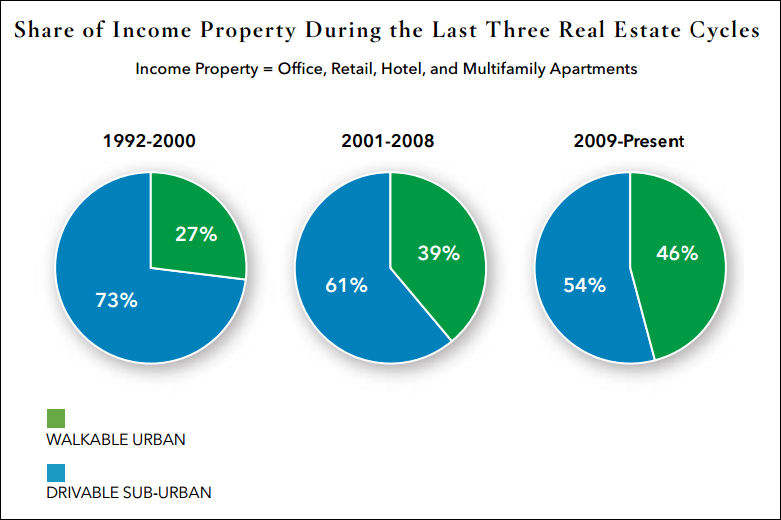Advertisement
Report: Greater Boston Needs More 'Walkable Urban Places'
Boston often ranks as one of the most walkable big cities in the country. And the convenience and ease of being able to walk to work or school or get to shops or restaurants by foot is something that attracts many people, particularly millennials, to the metro area.
But a new report finds these types of “walkable urban places” make up only 5.6 percent of land in a broadly defined Greater Boston — and there is a growing demand for more.
In a report released Wednesday, researchers at The George Washington University found real estate development in Greater Boston is becoming increasingly geared toward walkable urban areas instead of driving-focused areas typically found in suburbs. These walkable urban places, or “walkUPs,” are areas where almost everything is within walking distance. They are often high-density areas with mixed-use development, as well as easy access to multiple modes of public transit.
The small percentage of these “walkUPs” creates a premium on the land, which means higher rents and housing costs, according to the report.
“It’s time to get rid of the city versus suburb,” GW professor and report co-author Chris Leinberger said in a phone interview. “Yes, a lot of your walkable urban places are in the city of Boston, but the future growth of these places are going to be in the suburbs as we urbanize the suburbs — and not just Cambridge and not just Somerville.”
The report was done in collaboration with Northeastern University’s Dukakis Center for Urban and Regional Policy, the Metropolitan Area Planning Council and LOCUS, a coalition of real estate developers.
The report identified 57 walkable urban places around Boston stretching out to I-495 and looked at how the land is being used — whether for offices, retail space, hotels, rental apartments or for-sale housing. The report then ranked these "walkUPs" based on economic performance (GDP per capita) and social equity (housing affordability, public transit and access to jobs). Researchers used a variety of data sources, including the census, the U.S. Department of Housing and Urban Development, Walk Score and the Massachusetts Land Parcel Database.

Areas that ranked high on economic performance included Boston's Back Bay, Beacon Hill, the Financial District and Cambridge's Kendall Square. Areas that ranked low on economic measures included Lowell, Fitchburg, Haverhill and Lawrence.
High ranking areas for social equity included Boston's Chinatown, Mission Hill, Roxbury and Charlestown, and low ranking areas included Brockton, Boston's Dudley Square and Lower Allston and Marlborough. The report called for greater investment in lower ranking areas.
The report also noted several areas deemed emerging “walkUPs,” such as the recently developed Assembly Row in Somerville as well as Widett Circle, an area in South Boston that’s slated as one of Boston 2024's major development locations for the city’s Olympic bid.
Overall, the study found a higher percentage of development over the last 30 years — especially offices and hotels and more recently rental apartments — is geared toward walkable urban places.

This shift, the report argues, is good news for people looking to move to the area since those living in walkable urban places spend less money on transportation and are closer to jobs — savings that could perhaps defray higher costs associated with urban housing (more on this below).
The report also found “walkUPs” generate six to 12 times more property tax revenue per acre than driveable suburbs and have 37 percent higher real estate values.
Researchers also noted a strong nationwide correlation — but not causation — between walkable urban areas and economic growth.
"The gap between the GDP per capita of the Bostons of this country and the Orlandos or Tampas of this country — Boston has a 38 percent higher GDP per capita," said report co-author Leinberger. "That’s the difference between Germany and Romania, that’s the difference between a first-world and second-world nation."
Leinberger said the demand for “walkUps” is primarily being driven by millennials.
“Over the last 15 years, you’ve had a tremendous growth in the millennials — highly educated millennials coming to metropolitan Boston,” Leinberger said. “Seventy percent of those highly educated millennials that you’ve seen come through Boston are located in walkable urban places. If you didn’t have these walkable urban places, they may not have come.”
Highly educated households and empty nesters are also contributing to the demand for walkable urban places, according to Leinberger. Older populations used to associate urban areas with crime, poverty and low property values, but now see these areas more favorably, Leinberger said.
“The market is saying build more walkable urban,” he said.
While the report calls for more "walkUPs" in Greater Boston, it also recommends more affordable housing in these areas, since new urban development often displaces low income communities. The report calls for strategies, such as expanding tax credit programs and low income housing, to make highly desired walkable urban areas more inclusive.
"The affordable housing strategy of the last 50 years has been drive until you qualify — just keep on driving well past [Route] 128 and you’ll find the house that you can afford," Leinberger said. "Today, in a market that is demanding walkable urbanism, that's not something you can really put up with. You need more conscious social equity programs and affordable housing programs in the Kendall Squares, in the financial districts, in the Seaport."
Researchers also call public transit a vital part of these walkable urban areas. Noting the recent MBTA troubles this winter, the report argues for increased investment in public transportation infrastructure, especially rail and bus transit, as well as bike and walking pathways.
